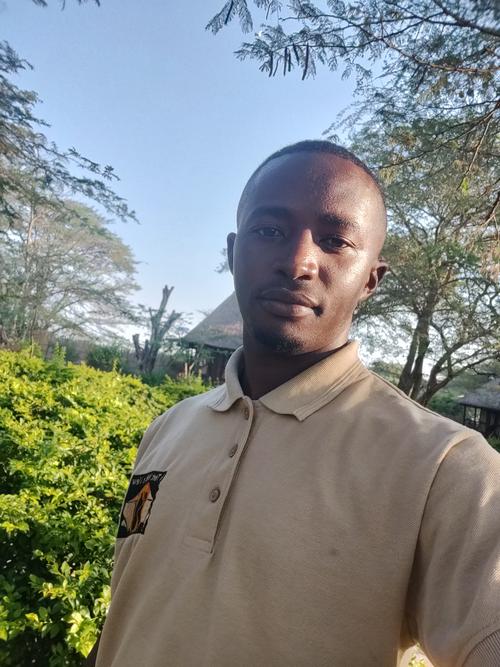Safari Destinations
Tanzania has some of the world's most iconic and awe-inspiring safari destinations, offering the opportunity to witness incredible wildlife and natural wonders, making for an unforgettable safari experience.
We might be biased but Tanzania has long been recognised as the best safari destination on the planet. It has given over a huge percentage of its landmass to protect Africa’s wildlife. It has some incredible parks and reserves, some the size of whole countries, where one can still be out all day and not see another human soul. It does not get better than this.
Possibly the most famous national park there is, the Serengeti, with its great wildebeest migration, has a strong claim to be the best safari holiday destination in the world.
Saadani offers a unique wildlife habitat. Lions may den just metres from the beach where turtles have laid eggs. It is a safari and beach holiday in one and by far the closest national park to Zanzibar.
The Ngorongoro conservation area is unique in Tanzania with Maasai allowed to move amongst the wildlife herds. At its heart is the crater, a 27kmsq safari holiday paradise, filled with the great mammals of Africa.
The pride of Tanzania, Nyerere National Park is the largest in Africa. Its total area, including its adjoining protected area, Selous Game Reserve, is larger than Switzerland! Its lakes and boat safari tours are a superb addition.
Lake Victoria is fabled as the source of the Nile and offers a rich cultural immersion. The mighty expanse of water abuts Serengeti National Park forming Tanzania’s best bird watching and wildlife safari destination.
Tarangire National Park is a lesser-known gem of Tanzania. Its elephant numbers are legendary, and the density of predator and prey make it a very special safari tour destination.
The roof of Africa, and the tallest free-standing mountain in the world, climbing Kilimanjaro is yet another bucket-list holiday in Tanzania. The various routes all take around a week.
Ruaha National Park is another gem of South Tanzania. Large herds of animals move between the Mwagusi and Ruaha rivers providing spectacular safari tour action.
Mikumi is a vastly underrated national park which forms part of the Selous – Nyerere eco-system. It is an excellent addition to any safari holiday in Southern Tanzania.
Dreaming of jaw-dropping landscapes teeming with wildlife? Look no further than Tanzania, the undisputed king of safari destinations. Whether you seek the iconic wildebeest migration thundering across the Serengeti plains, the breathtaking Ngorongoro Crater teeming with diverse creatures, or the off-the-beaten-path adventures of Selous, Saadani and Mikumi, Tanzania offers an unforgettable safari experience for every traveler.
Embrace the heart of the action with a Serengeti safari, witnessing the awe-inspiring migration or seeking out the Big Five. Immerse yourself in the Ngorongoro Crater, a natural amphitheater cradling a diverse ecosystem. Challenge yourself with the ultimate climb of Mount Kilimanjaro, Africa's rooftop. Venture into the hidden gems of Selous, Saadani and Mikumi, where vast landscapes and untouched wilderness await.
No matter your preference, Tanzania's best safari destinations promise unparalleled encounters with majestic animals, breathtaking scenery, and memories that will last a lifetime. Start planning your dream Tanzanian safari today and discover the magic that awaits.
Choosing the perfect safari in Tanzania can be an exciting but overwhelming task. There are many factors to consider, from the time of year and region to the type of accommodation and activities you're interested in. But don't worry, we are here to help! Here's a step-by-step guide to planning your unforgettable Tanzanian safari:
1. Decide when to go
Dry season (June to October): This is the most popular time for safaris, with clear skies, sunny days, and less vegetation, making it easier to spot animals. However, it's also the peak season, so expect higher prices and crowds.
Green season (December to March): The rains bring lush greenery and fewer crowds, but some roads may be impassable, and some parks may have limited visibility. It's also calving season for wildebeests, so you might witness this incredible natural phenomenon.
2. Choose your region
Northern Circuit: Home to the iconic Serengeti National Park and Ngorongoro Crater, this region offers the best chance to see the Great Migration and a vast variety of wildlife. It's also the most accessible and developed region.
Southern Circuit: Less crowded and more remote, this region offers off-the-beaten-path experiences in Nyerere (Selous Game Reserve), Saadani, Mikumi or Ruaha National Park. You'll find large variety of wildlife without the crowds.
3. Consider your budget
Luxury safaris: Offer high-end accommodations, gourmet meals, and personalized service with experienced guides. Expect to pay a premium price.
Mid-range safaris: Provide a good balance of comfort and affordability, with comfortable accommodations, tasty meals, and knowledgeable guides.
Budget safaris: Offer basic accommodations, simple meals, and shared vehicles. This is a great option for budget-conscious travelers who prioritize wildlife viewing over amenities.
4. Choose your activities
Game drives: The most common safari activity, offering excellent opportunities to see a wide variety of animals.
Walking safaris: Get closer to nature and experience the bush on foot, accompanied by an experienced guide.
Boat safaris: Explore waterways and see hippos, crocodiles, and birds on a boat safari.
Hot air balloon safaris: Soar above the savanna for breathtaking views and a unique perspective.
5. Bonus tip
Consider combining your safari with a beach relaxation on Zanzibar Island for a complete Tanzanian experience!
Unfortunately, there's no single "best" time for a safari in Tanzania, as it depends on your priorities and preferences. Here's a breakdown of the pros and cons of different seasons:
Dry Season (June to October)
Pros:
- Clear skies and sunny days: Easier wildlife spotting due to less vegetation.
- Animals concentrated around waterholes: Increased chance of seeing predators and prey interacting.
- Peak season: More options for tours and activities.
Cons:
- Higher prices: Peak season coincides with higher demand and costs.
- Larger crowds: Expect more vehicles and tourists at popular parks.
- Limited green landscapes: The scenery might be less lush compared to other seasons.
Green Season (December to March)
Pros:
- Baby boom: Witness the incredible spectacle of wildlife newborns! Calving season for wildebeests takes place in the Southern Serengeti from January to February, while other animals also welcome offspring during this time.
- Birdwatcher's paradise: The green season attracts a diverse range of migratory birds, making it a haven for birdwatching enthusiasts. Witness colorful flocks and unique species not present during the dry season.
- Lower prices: Fewer crowds translate to lower travel costs.
- Lush and vibrant landscapes: Enjoy the beauty of Tanzania's greenery.
- Fewer crowds: More intimate safari experience.
Cons:
- Some roads might be impassable, and visibility can be limited.
- Animals are more dispersed due to abundant water sources.
Additional factors to consider
The Great Migration:
If you're specifically interested in witnessing the wildebeest migration, June to August offers the best chance to see the Mara River crossing. However, the migration follows a circular route, so you can track it elsewhere depending on the month.
Calving season:
January to February is prime time to see newborn wildebeests in the South of Serengeti.
Personal preferences:
Do you prioritize sunny skies and abundant wildlife viewing, or are you comfortable with some rain and a more intimate experience?
Ultimately, the best time for your safari depends on your personal preferences and priorities. By considering the pros and cons of each season and your specific interests, you can choose the time that best suits your needs and creates an unforgettable experience.
The ideal length of a safari in Tanzania depends on several factors, including your budget, interests, and desired experiences. Here's a general guideline:
3-5 days:
This is a good option for a quick taste of the safari experience, covering 1-2 national parks. You'll see a variety of wildlife, but may not have time for in-depth exploration or relaxation.
6-8 days:
This is the sweet spot for most travelers, allowing you to visit the top parks (Serengeti, Ngorongoro Crater, Tarangire) and have a good chance of seeing the Great Migration (if timed right). You'll also have more time to enjoy the scenery and soak in the atmosphere.
9-11 days:
This is ideal for a more relaxed pace and in-depth exploration. You can spend more time in each park, go on additional activities like bush walks or hot air balloon rides, and truly immerse yourself in the safari experience.
12+ days:
This is for the ultimate safari adventure! With ample time, you can explore lesser-visited parks, go on specialized safaris, and really get off the beaten path.
Here are some additional factors to consider
Time of year:
Dry season (June-October): Best for game viewing in general. Vegetation is sparse, making animals easier to spot, and they congregate around waterholes. However, it's peak season with higher prices and crowds.
Green season (December-March): Lush landscapes, fewer crowds, and lower prices. However, some areas may be inaccessible due to rain, and game viewing can be more challenging due to thicker vegetation.
Interests:
If you have specific interests, like birds or big cats, you'll need to factor that into your itinerary and choose parks accordingly.
Budget:
Safaris can range from budget-friendly to luxury, so your budget will dictate the level of accommodation, activities, and overall experience you can have.
Ultimately, the best way to decide how many days is enough for your Tanzania safari is to talk to a travel agent or tour operator who can help you create a customized itinerary based on your specific needs and preferences.
 Outline your ideal journey
Outline your ideal journey
 Together, we'll design your dream trip
Together, we'll design your dream trip
 Confirm and get started with packing
Confirm and get started with packing
FIONA
Sales Consultant

TARA
Sales manager

PETER
Sales manager

PRAYGOD
Sales Consultant

REHEMA
Sales Consultant

JOACHIM
Sales Consultant
LET's Begin arranging your journey
Submit your Enquiry now, and a Travel Expert will respond within 24 hours.
ENQUIRE NOWCookies
This website uses cookies to ensure you get the best experience on our website.